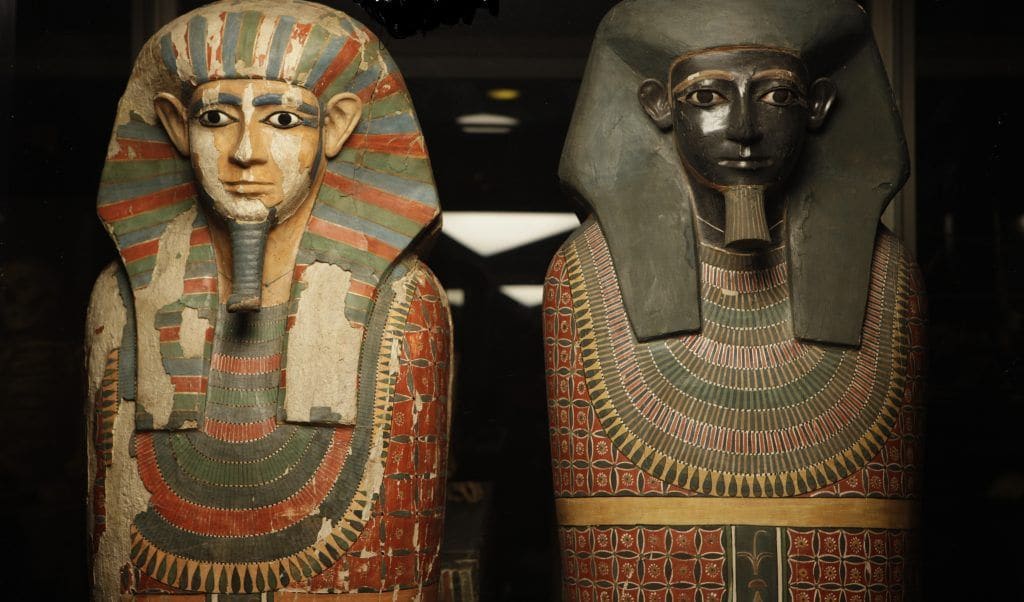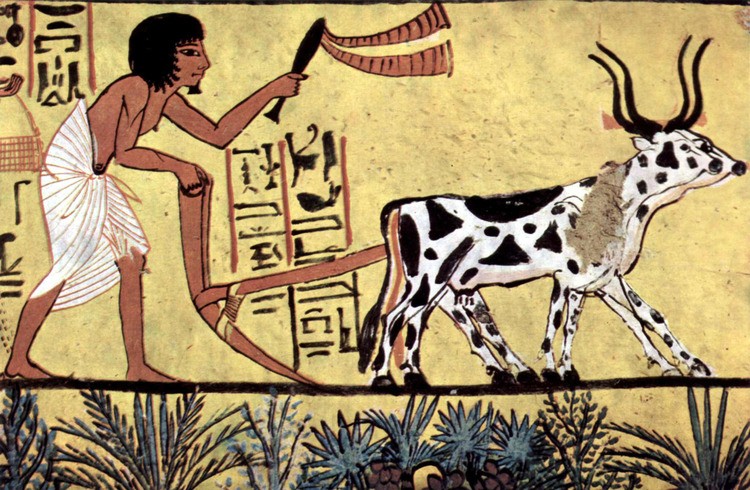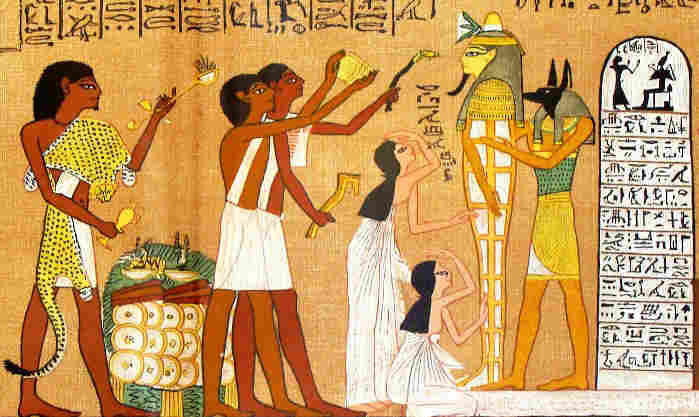Ancient Egyptian burial practices were complex and deeply rooted in their religious beliefs and concepts of the afterlife. The Egyptians believed in an afterlife where the soul would continue to exist. Because of this, they were extra thoughtful in preparing the dead for the journey to the next world.
Getting a better sense of what other cultures do when people die can help you reflect on your own or can give you ideas on how you would like to plan for a funeral.
In this guide, explore the rich culture surrounding how the ancient Egyptians buried their dead, their beliefs about the afterlife, and their funeral rites and ceremonies.
Egyptian Burial Practices
There are many key aspects that make Egyptian burial practices unique, such as how they prepared their dead and how they were buried. Take a look at these Egyptian burial practices below:
The mummification process
Mummification was the most distinctive feature of Egyptian burial practices. The body of the dead, also known as the Khat, was considered a part of the soul — it had to be preserved and buried according to strict religious regulations. Mummification was typically reserved for those who were wealthy, as it was a costly process.
The process involved preserving the body by embalming. This helped prevent decay and ensure its existence in the afterlife. The process usually took several weeks and involved:
- Removing the internal organs: All organs were removed and placed in canopic jars except for the heart, as it was believed to hold the soul of the dead.
- Treating the body with preservatives: Depending on the family’s wealth status, the body was treated with more expensive preservatives such as palm wine and pure myrrh.
- Covering the body with natron: Natron was the sacred salt that assisted in the mummification process. This would cover the body for 70 days.
- Wrapping the body in linen: The wealthy would wrap the dead in layers of new linens while the poor would reuse old clothing.
Burial sites and tombs
To house the bodies of the dead, the ancient Egyptians began to build elaborate tombs made of stone or mud bricks. Later on, during the times of the Old Kingdom, wealthy pharaohs began constructing pyramids as their tombs, the most famous being the Pyramids of Giza.
These pyramids were grand structures that served as the final resting place for the pharaohs and were filled with various treasures and possessions believed to be needed in the afterlife. These usually included:
- Solid gold
- A death mask which was typically made of gold
- Food, such as bread and meat
- Amulets
- Sacrificed servants
- Ushabti figurines, which were intended to act as servants for the dead in the afterlife
For those who were poor, bodies would be buried in very simple graves made of brick, sand, or clay — the hot sand placed on top of the body would also act as a natural preservation as it dried out the remains. The tombs and gravesites were also decorated with funeral flowers.
Ancient Egyptian Beliefs On Death
The ancient Egyptians had various beliefs on death and believed the soul would continue to exist in the afterlife. Read on to learn more about these beliefs in depth.
The Field of Reeds
The Field of Reeds, sometimes also called The Field of Offerings, is the paradise within heaven according to Egyptian mythology. Within this paradise, there’s no suffering, only pleasure, infinitely. This was the belief that death was not the end but the beginning of the journey into the afterlife. To enter the Field of Reeds, it’s essential to observe the proper funeral practices.
After death, the soul was divided into four parts, according to the ancient Egyptians. This included:
- Ka: The ka was the life force or vital essence of an individual. It represented their individuality and personality. The ka needed sustenance, and food and drink offerings were made to ensure its well-being.
- Ren: The ren was the individual’s name or identity. It was believed that as long as the person’s name was remembered and spoken, it would continue to exist in some form.
- Ba: The ba was often depicted as a human-headed bird and represented the individual’s personality or character. It was believed to be the part of the soul that could move freely between the earthly and spiritual realms.
- Akh: The Akh was the transformed or glorified state of the deceased’s soul. It was associated with the concept of enlightenment and immortality. The Akh was believed to be able to join the gods in the afterlife.
After collecting the Akh, the god Anubis would guide the soul to the Hall of Truth where it would be judged by Osiris, the Judge of the Dead, and Ruler of the Underworld. If the soul was deemed worthy, it could enter the Field of Reeds.
The Book of the Dead
The purpose of the Book of the Dead was to provide the deceased with instructions, funeral prayers, and magical spells to help guide them to the afterlife and unite with Osiris, the god of the dead. It aimed to help the individual overcome obstacles, pass judgment, and attain a favorable outcome in the Hall of Ma’at (the realm of judgment).
The text contained a variety of elements, including hymns, rituals, descriptions of the afterlife, and spells that covered a range of topics. These spells provided guidance and addressed issues such as:
- Protection from dangers
- Ability to breathe, see, and move in the afterlife
- Knowledge of the correct rituals and offerings to perform
This book was often buried in the tombs alongside the dead.
Egyptian Funeral Rites And Ceremonies
In addition to Egyptian burial practices, they also performed unique funeral rites and ceremonies. Learn about them below.
The Opening Of The Mouth Ceremony
The Opening of the Mouth ceremony would be performed to help the dead carry out tasks in the afterlife. This ceremony would be carried out by a priest or the son of the deceased.
Throughout the ceremony, “The Lamentations of Isis and Nephthys” could be heard, and texts from the Book of Dead would also be recited. A priest would then touch the mouth or face of the dead with his hand to “open” the senses of the soul and allow it to enjoy the food offerings.
Reincarnated as an Akh, the dead could then join the funeral feast with the mourners. After the meal, the dead would journey to the Hall of Truth.
Egyptian mourning
Mourning was a significant aspect of ancient Egyptian funeral practices. In the households of the elites, there would be screaming and wailing as the people mourn the passing of their loved ones.
In grandiose spectacles of grief, women would, after smearing their heads and faces with mud, take to the streets and round up their relatives and friends to grieve in public. Men who were in mourning would not shave as a sign of their grief. This mourning period would traditionally last for 40 days.
Additionally, Egyptians would hire professional mourners, also known as the “Kites of Nephthys,” to join and comfort the grieving family. This was a practice that also originated in Mediterranean and Chinese cultures.
Lamentations
Lamentation was essential in a successful ancient Egyptian funeral. During the ceremony, professional mourners would be employed to perform “The Lamentations of Isis and Nephthys.” Egyptians believed that these outpourings of grief could reach the Hall of Truth, where the soul faced judgment.
Remember Your Loved Ones With Funeral Ceremonies
Ancient Egyptian burial practices offer us a fascinating glimpse into the rich tapestry of their civilization. Through their meticulous preparations, intricate rituals, and enduring belief in the afterlife, the Egyptians sought to ensure the eternal preservation of the soul and the physical body.
The complex funerary customs and elaborate Egyptian burial practices reflect the deep spiritual beliefs of the ancient Egyptians and serve as a lasting legacy, allowing us to connect with and appreciate their enduring cultural and historical significance.
Choice Mutual often cites third-party websites to provide context and verification for specific claims made in our work. We only link to authoritative websites that are known to provide accurate information. You can learn more about our editorial standards, which guides our mission of delivering factual and impartial content.
- tombs. https://resources.saylor.org/wwwresources/archived/site/wp-content/uploads/2013/03/ARTH110-3.2-Tombs.pdf
- Field of Reeds. https://egypt.mrdonn.org/afterlife.html
- mythology. https://www.laits.utexas.edu/cairo/teachers/osiris.pdf
- Osiris. http://www.ctio.noao.edu/instruments/ir_instruments/osiris2soar/osbio.html
- Book of the Dead. https://3dcoffins.berkeley.edu/content/welcome-book-dead-3d
- Isis. http://persweb.wabash.edu/facstaff/royaltyr/AncientCities/web/rel%20372%20project/ISIS.htm






